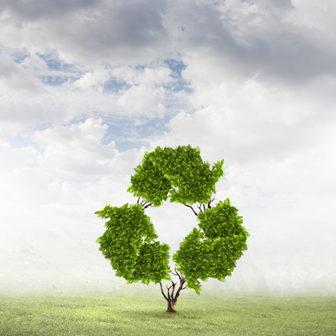COSMETIC PACKAGING SORTING part 1 - Your contribution to a clean environment

We all have doubts, even on seemingly trivial and mundane issues. But what if these issues clearly irrelevant for us may be of great importance for the environment protection? One of such issues is the waste sorting, including cosmetic waste. And this is what we will focus on in this text - have you ever thought about where and why the packaging of the cream or shampoo you used should end up in order to use its potential in the best possible way?
Let's start with the fact that it is, despite appearances, very simple. You only need to think for a moment, look at the packaging and know the basics of waste segregation. We will explain it to you step by step, no worries.
How to prepare the packaging for disposal?
First of all, use the whole cosmetic. Of course, no exaggeration – there’s no need to dig out stubbornly for micro-leftovers, that's not the point. Just use what you can. However, if there is something left and it is no longer suitable for use - empty the container of the residue. Usually, product remnants of an expired, dried, contaminated or unusable in any other way material should end up in a mixed waste container. If the packaging is already empty, YOU DON'T HAVE TO WASH IT. Most wastewater treatment plants clean packages (mainly plastic), that is why washing them before throwing them away is usually completely unnecessary, and not even ecological, because it duplicates water consumption.
Which container to choose?
Once you've used up the cosmetic, check the labeling of the packaging material. The use of these symbols is not obligatory, however, we agree that any eco-friendly manufacturer should include one on his product to facilitate the sorting of waste by the consumer. Useful cheat sheet below:
These are the designations of the most commonly used materials in cosmetic packaging production, including the containers in which they should end up after using their contents. These markings are usually found on the bottom of the packaging. The division concerns glass, paper, plastic and metal, and composite packaging - the last one is rather rare, but it is worth being aware of its existence. Of course, in order to give his product a unique look, the manufacturer can choose different raw materials to each part of packaging – however it should be marked separately in this case. We are able to distinguish most of the raw materials ourselves, then we can separate them and throw them away into appropriate containers. If you're not sure though, it's safest to choose a black mixed-waste bin.
Other markings
In addition to marking the container itself, the cosmetic manufacturer puts various symbols on the label of its product. Each of these symbols informs us about the possibilities associated with a given packaging.
1. The so-called "Möbius strip" is an international symbol and declaration that the packaging is recyclable. The arrows indicate to collecting, processing into a new product, and re-buying by the consumer. It is worth mentioning that placing this symbol on the packaging is not obligatory.
2. The "Take care of cleanliness" sign indicates an issue that should be obvious - the packaging should be thrown into the appropriate bin to avoid environmental pollution.
3. Biodegradable / compostable packaging - marking of packaging that decomposes in industrial conditions. The most commonly used raw material for the production of such packaging is organic starch. This mark cannot be placed on the packaging without the appropriate certificate. The original pictogram has a unique number, but it happens that companies use a character without it. This means that they are not authorized to use it, so it is a scam.
4. The aluminum sign says that the packaging is recyclable and should be placed in a plastic container - the yellow one.
5. "Green point" is a registered trademark. Fees for a license for this mark support the construction of a recovery and recycling system for packaging waste. However, this mark does not mean that the packaging is recyclable.
6. Crossed-out container - it is difficult to find on the cosmetic packaging, but it is an extremely important symbol indicating that the container should not be thrown into any of the bins. The only acceptable solution for its disposal is to transfer it to a specially designated collection point.
7. The mark of reusable packaging is the signature of the packaging that can be used several times. This mark is used only in Poland, it does not apply in other countries. Most often it appears on returnable bottles, but in cosmetics it can be used in the context of refill packaging. In order to be able to use this mark on the packaging label, the producer is obliged to declare its suitability for at least two uses for the same purpose.
Now you know
Hope the above text has illuminated for you the dark meanders of responsible segregation and actions you can contribute to the glorious care of our planet. Contrary to appearances, dividing waste into appropriate containers is not so difficult at all. A moment of reflection is enough and we can enjoy our small and, in consequence, significant contribution to care for the environment. Want to know even more details about the segregation of packaging after used cosmetics? Look out for the second part of the text on our website!